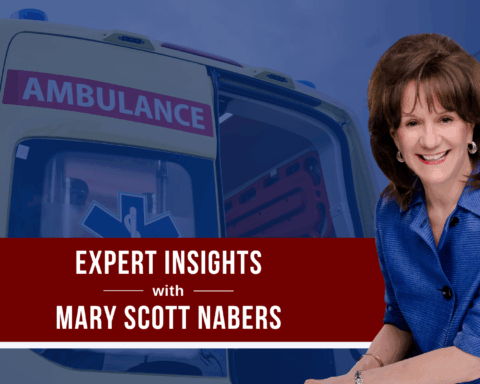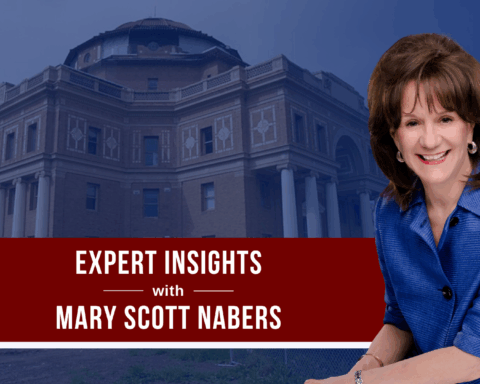After working for the past 25-plus years to help companies be successful in selling to government, I get questions daily about what it takes to be successful in the public sector marketplace. This column’s objective is to provide some “Best Practices for Success” because I firmly believe it is in the best interest of all parties, including taxpayers, to make collaborations and public and private sector interactions as successful as possible.
The U.S. government marketplace is the largest transactional market in the world. Is it competitive? Absolutely! It is also unlike any other sector, and I say this often to companies – “Don’t jump into this space until you understand it well because there are too many landmines to be avoided and too many mistakes that you should not make.”
Companies that best understand the market space are the most successful. It is rarely the size of a company that determines its success rate. Instead, firms that are most successful understand how to interact with public officials, communicate well, build credibility, respect the politics and navigate the bureaucracy well.
So, where to start? Because there’s too much to share in one short column, I will address how to get started. It includes tips that we pass on when we engage with new clients to help them be more successful.
Success always begins with a strategy session. It is necessary to examine what a company has to offer objectively. Who needs it? Why? Where will be the greatest demand? What kind of competition will the company face? What contracts do the competitors hold? When do the current contracts expire? How does the pricing compare? What are the differentiators? Does the company have references to confirm experience and credibility? If not, how can that be overcome?
Once those questions are answered, it is easy to determine how to proceed. Developing a “go-to-market strategy” is at the top of any list, and this next step begins with more questions: What are the offering’s highest value propositions? What benefits are offered? That message must be clear, accurate and good. Does the company need higher visibility? More references? Better informational/marketing material? Is the company’s website government-friendly? Does the company have a contracting vehicle?
Public officials like to use contracting vehicles when possible because that allows a purchase to be made quicker and requires fewer resources. So, one of the first requirements is to select a contract vehicle and begin immediately to get it in place. There are dozens of options, and occasionally, more than one contracting vehicle is required because various jurisdictions have different preferences. If a company does not have a contract vehicle, it will always have to go through a much longer formal procurement process.
Because a majority of meetings with public officials are held virtually, it is necessary to structure a sales presentation in a specific way. Public officials are too busy to appreciate chit-chat on the call and surely don’t want to be questioned. Instead, they want to see a presentation that includes a short introduction that speaks to the company’s credibility and then moves quickly into a simple presentation about what the presenter has to offer. Consider the questions that will be in the official’s mind as you are presenting: Is the offering a “must-have” or a “nice-to-have?” How is it priced? How attractive are the benefits it offers? Would it be easy to work with this company and this sales representative?
Marketing material should be short – a one-pager is usually preferred. One should never hand a marketing packet to a government official. It will end up in the trash can in most cases. Government executives want to see information customized to match the message and presentation they have just seen. It is important to prepare marketing material that caters to the needs of public officials and to include the sales executive’s contact information on all material provided.
Follow-up after a presentation is critical and should be presented as quickly as possible. If you wait too long, you may be forgotten. That’s not because the presentation was bad; it’s because too many competing distractions can overwhelm the official before your follow-up has been completed. Before any meeting ends, sales execs should pose the questions: What are our next steps? And may I send you a short overview of what we discussed today?
Best practices for securing meetings at the C-level of any governmental entity include the following:
- Send a brief email request for a meeting introducing yourself and the company you represent.
- List the highest-value benefit of what you want to present.
- Mention other government references if possible.
- Ask for a short 30-minute meeting and say you will appreciate and respect whatever time allocation can be granted.
- Consider saying, “If the timing is not suitable for your offering now, you feel sure the official will be interested in hearing about how other similar agencies benefit from the offering.”
- Express your thanks for consideration of the meeting request.
- Keep the message as short as possible.
- Develop a very compelling subject line.
- If you get no response, send another shorter message directly over your first note, ask again for 30 minutes and say that, if necessary, another person could join the call instead.
Basic Best Practices for Successful Virtual Presentations
- Have a great and very short PowerPoint presentation with no more than five slides. Make it colorful, not too much text, and easy to read.
- Begin by thanking the public official for their excellent work.
- Spend no more than 4 minutes introducing the company you represent. Be specific and selective about what you present and explain that you’ll follow up with a brief one-pager about the company.
- Move quickly to the benefits you can offer and how your offering works. Plan for this part of your presentation to last no longer than 15 minutes and encourage questions.
- Mention any government references or tell any anecdote about a successful project that has been completed in 3 to 4 minutes.
- End your comments and ask if anyone has any questions. If there are none, mention a few common questions that are usually asked and answer them. Make sure to keep track of time and respect the assigned limit.
- Thank the official and ask about the next steps.
- Follow up immediately and stay in touch. Don’t let the conversation end with the first presentation.
There is more to know, of course, but getting started correctly is a critical component of future success. More best practices will be delivered over the next several weeks.
All news and information on this site is provided by the team at Strategic Partnerships, Inc. Check out this short 1-minute video that provides a quick overview of how we work with clients.












